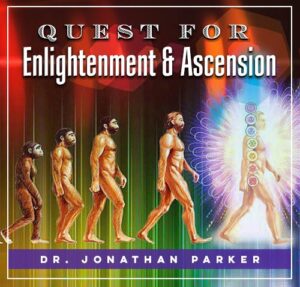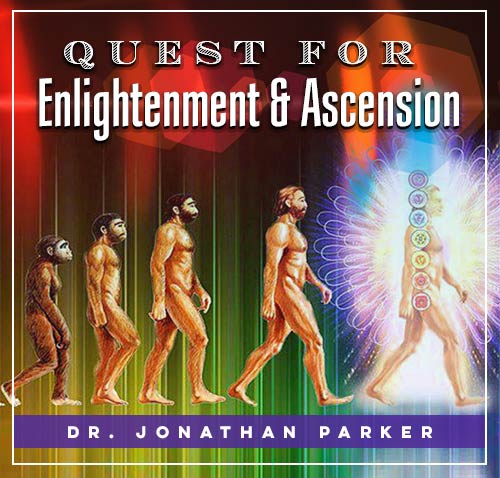How Do We Know What’s Real and What’s Not?

Looking for more amazing products? Check out our online store and explore our collection here! Happy shopping!
Before diving in, please note: This post is for informational purposes only. If you’d like to know more about how we approach topics, feel free to check out our friendly Disclaimer Page.
Hey there, amazing readers! 
We’re committed to delivering quality posts, and your support (even just sticking around despite the ads) means everything to us. So, bear with us, and thanks for helping us keep the good vibes rolling. Now, on to the fun stuff!
TRANSLATE BUTTON AT THE END OF THE ARTICLE
A Quick Overview
In a world buzzing with information, figuring out what’s real can feel like a Herculean task.
From social media to news outlets, we’re bombarded with so much data that distinguishing fact from fiction can be bewildering.
But fear not!
In this article, we’ll embark on an enlightening journey through the nature of reality.
We’ll explore how our perception shapes our understanding, the impact of media literacy, and the importance of critical thinking.
Together, we will uncover the tools we need to navigate this landscape with confidence.
Understanding Reality: What Does It Really Mean?
Reality is often defined as the state of things as they actually exist, but that definition only scratches the surface.
It encompasses experiences, beliefs, and perspectives.
What’s "real" for one person may differ vastly from another’s experience.
Have you ever had a friend recount a story that left you scratching your head?
Their version of events might be completely different from yours.
In philosophy, reality is a hot topic.
Thinkers like Descartes have pondered the nature of existence, famously questioning, "How do I know I exist?" His meditations reveal that our consciousness is proof of our reality, yet the reliability of that consciousness is up for debate.
At its core, reality can be subjective.
What we perceive through our senses molds our understanding of the world.
This subjectivity is what leads to different interpretations of the same event, fueling debates and discussions.
Furthermore, reality can be fluid.
Take the concept of virtual reality, for instance.
It creates immersive environments that can feel just as real as the physical world.
This raises questions: Is what we experience in a virtual setting any less valid than our interactions in the physical world?
In summary, grasping the essence of reality is complex.
It’s a blend of perception, experience, and philosophical inquiry.
Understanding this complexity can prepare us for the challenges of discerning truth in our lives.
The Role of Perception in Defining Our Reality
Perception acts as the lens through which we view the world.
It’s like wearing glasses that can alter how we interpret things.
Our backgrounds, experiences, and even moods shape our perceptions.
For instance, two friends might watch the same movie and come away with entirely different feelings about it.
One might find it hilarious, while the other thinks it’s a snooze-fest.
Did you know that our brains can trick us?
Optical illusions demonstrate how our perception can lead us astray.
Explore the Path to Spirituality and Enlightenment – Start Here.
A classic example is the famous "dress" that went viral on social media.
Some saw it as blue and black, while others swore it was white and gold.
This phenomenon reveals just how flexible perception can be.
Culture also plays a significant role.
Someone raised in a collectivist society might perceive individualism differently than someone from an individualistic culture.
These perspectives inform our beliefs and values.
They lead us to interpret reality uniquely based on our cultural context.
Additionally, emotions can distort our perception.
When we’re happy, we may see the world in a brighter light.
Conversely, when we’re down, everything seems gray.
This emotional filter influences how we interpret events and interactions.
Ultimately, recognizing the power of perception can lead to greater empathy.
Understanding that others may perceive things differently helps foster more meaningful conversations and connections.
How Our Senses Shape What We Consider Real
We often think of our senses as gateways to understanding reality.
Sight, sound, taste, touch, and smell feed us information about our surroundings.
But here’s a thought: what happens when one of these senses is unreliable?
Take vision, for example.
Our eyes can create illusions.
The famous Müller-Lyer illusion shows two lines of equal length appearing unequal due to the arrows at the ends.
This plays tricks on our minds and illustrates how our sight can mislead us.
Hearing can also be deceptive.
Ever heard someone say something but, due to background noise or distraction, you didn’t quite catch it?
Mishearing can lead to misunderstandings that alter our perception of a conversation.
Let’s not forget taste.
A classic example is how the same dish can taste different based on our mood or environment.
Eating ice cream on a hot summer day feels like pure bliss, but on a cold winter night?
Not so much.
Touch brings another layer.
A soft fabric can feel comforting, while a prickly texture may evoke discomfort.
Our physical sensations can color our experiences, reinforcing or challenging our understanding of “real.”
In essence, our senses are both our guide and our potential misguidance.
They provide the building blocks of reality but can also distort it.
Being mindful of this can help us appreciate the complexity of our experiences.
The Science of Truth: Fact vs. Opinion Explained
Knowing what’s real often involves distinguishing between fact and opinion.
Facts are objective and verifiable.
For instance, "Water boils at 100 degrees Celsius" is a fact.
You can test it and see it for yourself.
On the other hand, opinions are subjective.
They stem from personal beliefs, experiences, and feelings.
Saying "Chocolate ice cream is the best flavor" is an opinion.
You might love chocolate, while a friend might swear by vanilla.
Knowing the difference is crucial, especially in today’s polarized world.
Opinions can often masquerade as facts, especially on social media.
A post declaring a political stance as the "only truth" can muddy the waters.
It’s vital to approach such claims critically.
In research, the scientific method is a powerful tool for establishing facts.
It involves observing, hypothesizing, testing, and drawing conclusions.
This process is how we build a foundation of knowledge.
However, not every claim undergoes such rigorous scrutiny.
In discussions, I find it helpful to ask questions. "What evidence supports that statement?" or "Who conducted that study?" can lead to deeper understanding.
Engaging in fact-checking is essential in cultivating informed opinions.
By promoting a culture of healthy skepticism, we can sharpen our discernment and have meaningful conversations rooted in truth.
Media Literacy: Navigating Fake News and Misinformation
In the digital age, media literacy is paramount.
With a click, we can access countless articles, videos, and social media posts.
But not everything we read or watch is credible.
Misinformation and “fake news” can spread like wildfire, distorting our understanding of reality.
So, what can we do?
First, we must be curious.
Check the source of the information.
Reputable outlets typically have established editorial standards.
If you come across an outrageous claim, don’t rush to share it—pause and reflect.
Next, cross-reference information.
If multiple credible sources report the same story, it’s more likely to be accurate.
Think of it as a team of detectives working together to uncover the truth.
Another valuable skill is understanding bias.
Every media outlet has a perspective.
Some might lean left or right.
Recognizing this bias can help us critically evaluate what’s presented.
Also, don’t underestimate the power of fact-checking websites.
Organizations dedicated to debunking false claims can provide clarity.
Websites like Snopes or FactCheck.org are great resources when in doubt.
Finally, engage with diverse perspectives.
Hearing different viewpoints can enrich our understanding and promote empathy.
It’s easy to fall into echo chambers, but stepping outside of them fosters a more comprehensive view of reality.
By honing our media literacy skills, we can become informed consumers of information, ready to tackle the challenges of false narratives and misinformation.
The Power of Critical Thinking in Everyday Life
Critical thinking is like a mental gym.
It trains our brains to analyze information, evaluate arguments, and make informed decisions.
Learning to think critically empowers us to navigate a world full of noise and confusion.
In daily life, critical thinking can help us in numerous ways.
For instance, when faced with a persuasive advertisement, we might ask, "Does this claim hold up?" Instead of taking assertions at face value, we dig deeper.
One effective tool is the Socratic method, which involves asking a series of probing questions to clarify thoughts.
For example, when discussing a controversial topic, ask yourself and others: "What evidence supports this viewpoint?" or "Are there alternative perspectives?"
Another crucial aspect of critical thinking is recognizing logical fallacies.
These are errors in reasoning that weaken arguments.
For instance, the ad hominem fallacy attacks the person rather than the argument.
Being aware of such pitfalls can sharpen our discussions and lead to more productive conversations.
Moreover, I’ve found that taking a step back during heated discussions helps.
Pausing to reflect can prevent knee-jerk reactions and allow for more reasoned responses.
Critical thinking isn’t just for academics or professionals; it’s a life skill.
Whether deciding on a purchase or engaging in a debate, applying critical thinking can lead to better choices and clearer understanding.
Social Media: Friend or Foe in Finding Truth?
Social media has transformed how we consume information.
Platforms like Facebook and Twitter allow us to connect and share ideas.
Yet, they come with both benefits and pitfalls when it comes to discerning what’s real.
On the positive side, social media can amplify voices and mobilize movements.
Think of how hashtags like #MeToo sparked global conversations about harassment.
It creates a sense of community and raises awareness about critical issues.
However, the downside is significant.
Misinformation can spread rapidly.
A single post can generate waves of confusion before anyone has a chance to fact-check it.
In this environment, it’s easy to misinterpret events, especially when sensationalism reigns.
One way to harness the power of social media is to follow credible sources.
Look for journalists, experts, or organizations that prioritize accuracy.
They can provide reliable insights amidst the chaos.
Engagement is key.
Don’t just passively consume content—interact with it.
Ask questions, share thoughts, and challenge misleading information.
This proactive approach cultivates a more informed online community.
Lastly, take breaks when needed.
Social media can be overwhelming, and stepping back allows for clearer thinking.
It helps us resist the urge to react impulsively to every headline.
Social media can be a tool for truth or a source of confusion.
It’s up to us to navigate it wisely, leveraging its benefits while remaining vigilant against misinformation.
The Importance of Evidence in Establishing Facts
Evidence serves as the backbone of our understanding of reality.
It grounds claims in reality and lends credence to arguments.
But what constitutes good evidence?
Let’s break it down.
First, empirical evidence, which is based on observation or experimentation, is critical in scientific discussions.
When researchers conduct experiments and gather data, they lay the groundwork for establishing facts.
Next, anecdotal evidence can be persuasive but should be approached cautiously.
While personal stories can shed light on experiences, they might not represent the larger picture.
Always consider the broader context.
Historical evidence is another crucial type.
Examining documents, artifacts, and testimonials can provide insights into past events.
This historical lens helps us understand how our current reality is shaped by what has come before.
When assessing claims, I find it invaluable to ask, "What evidence supports this?" and "How reliable is this evidence?" This inquiry hones my ability to discern between fact and fiction.
Furthermore, peer-reviewed studies offer a high level of credibility.
When experts evaluate and critique each other’s work, it creates a layer of accountability.
This process strengthens the validity of the conclusions drawn.
In summary, evidence is essential in establishing facts.
By prioritizing credible sources and engaging critically with information, we can build a solid foundation for understanding reality.
Cognitive Bias: How It Distorts Our Understanding
Cognitive biases are like mental shortcuts our brains take.
While they can help us process information quickly, they also distort our understanding of reality.
Let’s explore a few common biases that may catch us off guard.
Confirmation bias is a typical culprit.
It leads us to seek out information that supports our pre-existing beliefs while ignoring contradictory evidence.
For example, if you believe that a certain diet is beneficial, you might only read articles that affirm that view, sidelining research that suggests otherwise.
Another bias, the availability heuristic, causes us to overestimate the importance of information that’s readily available.
If we hear about a plane crash, we might irrationally fear flying, even though air travel is statistically safe.
Anchoring bias can also skew our judgment.
The first piece of information we encounter often serves as a reference point, influencing how we interpret subsequent data.
If we hear a high price for a product, we might perceive a lower price as a bargain, even if it’s still expensive.
Understanding these biases can help us cultivate a more nuanced view of reality.
When discussing challenging topics, I remind myself to consider alternative perspectives and challenge my assumptions.
It’s a simple yet effective way to combat bias.
Awareness of cognitive biases fosters humility and open-mindedness.
When we recognize that our judgments are not infallible, we create space for learning and growth.
Philosophy and Reality: Great Minds Weigh In
Philosophy has long been at the forefront of understanding reality.
Great thinkers have grappled with questions that still resonate today.
René Descartes, for instance, introduced the famous phrase "Cogito, ergo sum" (I think, therefore I am).
This statement invites us to consider the act of thinking as proof of existence.
It emphasizes the importance of consciousness in defining reality.
Plato’s allegory of the cave paints a vivid picture of perception versus reality.
In this story, prisoners perceive shadows on a wall as reality, unaware of the actual objects outside.
It suggests that our understanding can be limited and encourages us to seek deeper truths.
Immanuel Kant argued that our experiences shape our understanding but also acknowledged that there may be aspects of reality beyond our comprehension.
This tension between perception and the unknown challenges us to explore the boundaries of our understanding.
More contemporary philosophers, like Daniel Dennett, delve into consciousness, questioning how our mind interprets reality.
His work encourages us to examine the intricate relationship between thought and experience.
Engaging with these philosophical ideas can enrich our understanding of reality.
They invite us to ponder our existence, our perceptions, and the nature of truth itself.
Discussing these concepts can spark lively debates and profound insights.
Ultimately, philosophy encourages curiosity.
It invites us to explore, question, and reflect.
By embracing this spirit, we can deepen our understanding of what it means to be human in a complex world.
Technology’s Impact on Our Perception of Reality
Technology has revolutionized how we experience reality.
From smartphones to virtual reality, it shapes our perceptions in astonishing ways.
Take augmented reality (AR), for example.
Apps that overlay digital images onto the physical world create experiences that blend fantasy and reality.
Pokémon Go is a fun illustration—players chase virtual creatures that coexist in their real environment.
Moreover, advancements in virtual reality (VR) transport users to immersive worlds that can feel just as real as the physical one.
This technology has applications in gaming, education, and therapy, demonstrating its potential to enhance experiences but also blurring the lines of reality.
However, with these advancements come challenges.
The rise of deepfakes—manipulated videos that can convincingly portray someone saying or doing something they never did—raises concerns about trust and authenticity.
It becomes increasingly difficult to discern what’s real and what’s fabricated.
Social media algorithms can also distort our perceptions.
They curate our feeds based on our preferences, creating echo chambers that reinforce our beliefs.
This amplification can isolate us from diverse viewpoints, limiting our understanding of reality.
In the tech-driven landscape, it’s crucial to remain vigilant.
As we embrace new technologies, we must also cultivate critical thinking skills.
Questioning what we see and seeking reliable sources are key to navigating this landscape effectively.
By recognizing technology’s impact, we can harness its potential while maintaining a clear perspective on what’s real.
Embracing Uncertainty: Finding Peace in the Unknown
In our quest for truth, we encounter uncertainty.
The unknown can be unsettling.
However, embracing it can lead to personal growth and resilience.
Life is unpredictable.
We can plan, prepare, and strategize, yet outcomes may surprise us.
Accepting this uncertainty allows us to adapt and thrive in changing circumstances.
Think about it: when facing ambiguous situations, I often remind myself that it’s okay not to have all the answers.
This mindset fosters creativity and exploration.
Instead of fearing uncertainty, I’ve learned to see it as an opportunity for discovery.
Moreover, uncertainty encourages us to stay curious.
It prompts us to ask questions and seek knowledge.
When we accept that we don’t know everything, we open ourselves up to learning from others.
In discussions, embracing uncertainty can also lead to more constructive conversations.
Instead of trying to "win" an argument, we can approach discussions with a willingness to understand different perspectives.
This openness can foster empathy and connection.
Practicing mindfulness can help us navigate uncertainty.
It encourages us to stay present, appreciating the moment without trying to control the outcome.
This practice can bring peace amid chaos.
Ultimately, embracing uncertainty enriches our lives.
It invites us to explore, learn, and connect.
By finding peace in the unknown, we can approach the world with curiosity and resilience.
Conclusion
In the end, discerning what’s real in today’s multifaceted world is a journey—a blend of perception, evidence, and critical thinking.
We must remain vigilant, questioning our beliefs and embracing new perspectives.
By honing our media literacy and understanding the role of cognitive biases, we can navigate the complexities of information with confidence.
So, the next time you encounter a bold claim or a viral post, pause and reflect.
Ask questions, seek evidence, and most importantly, embrace the richness of uncertainty.
After all, our quest for understanding is not just about finding answers; it’s about exploring the fascinating journey of discovery itself.

The Enlightenment Journey is a remarkable collection of writings authored by a distinguished group of experts in the fields of spirituality, new age, and esoteric knowledge.
This anthology features a diverse assembly of well-experienced authors who bring their profound insights and credible perspectives to the forefront.
Each contributor possesses a wealth of knowledge and wisdom, making them authorities in their respective domains.
Together, they offer readers a transformative journey into the realms of spiritual growth, self-discovery, and esoteric enlightenment.
The Enlightenment Journey is a testament to the collective expertise of these luminaries, providing readers with a rich tapestry of ideas and information to illuminate their spiritual path.
Our Diverse Expertise
While our primary focus is on spirituality and esotericism, we are equally passionate about exploring a wide range of other topics and niches 

To ensure we provide the most accurate and valuable insights, we collaborate with trusted experts in their respective domains 
Our blog originally focused on spirituality and metaphysics, but we’ve since expanded to cover a wide range of niches. Don’t worry—we continue to publish a lot of articles on spirituality! Frequently visit our blog to explore our diverse content and stay tuned for more insightful reads.
Hey there, amazing reader! 
Check out our store here and take a peek at some of our featured products below! Thanks for being awesome!













